Paul Savoy of A-ha: Inside His SoHo Song Incubator
MANHATTAN: The streets of SoHo are paved with cobblestones. Walking down these historic blocks on a cool March afternoon, its easy to wonder where on Earth you actually are, and when – you could be far in the future or deep in the past.
Now imagine that your present trek is leading you to a studio where deadlines have all but disappeared, and the only pressure is to advance the art of songwriting even further: The front door you arrive at belongs to none other than Pål Waaktaar Savoy a.k.a Paul Savoy, co-founder of the globally embraced group A-ha.
Welcome to his realm – you have reached what just might be the best of all possible worlds.
“When you grow up, all you want to do is what you love to do,” says the soft-spoken Savoy. “The first time I started a demo studio in NYC, it was all tape machines – now it’s much more doable to make a great-sounding album. The technology now gives me more time to work on the things that I find to be more important.”
A Room In Tune
Those “things” are songs, and Savoy’s SoHo studio is a constantly humming incubator for these 4:04-spans of magic. And why not? Working with A-ha, the guitarist and his bandmates from Norway have seen first-hand the power of what well-crafted songs can do: To date, the group has sold over 36 million albums and 15 million singles worldwide, played for crowds as large as 198,000, and released nine records in their lengthy lifespan – from 1982 until their official farewell in 2010.
So closely associated is A-ha with their native Oslo that the discovery of Savoy living happily in New York City can be momentarily disorienting. But actually, this oasis in downtown Manhattan has been a natural fit for him since soon after the release of A-ha’s 1985 debut album, Hunting High and Low.
“In those days, we were traveling so much that I couldn’t say I lived anywhere!” Savoy recalls. “But the first time I came to NYC to promote, I fell in love with SoHo. I thought, ‘This is the place.’”
Almost three decades later SoHo remains an ideal creative center as he writes new material for his own band Savoy — which features his wife Lauren on vocals, his collaborations with other songwriters, and film music work. Savoy’s nonstop dedication to his craft is enabled by engineer Eliot Leigh and an optimal mix of guitars, synths, analog hardware and digital tools all living together comfortably in one room growing less crowded over time, as he becomes more selective about his tools.
“10 years ago I had a Trident desk, every synth in the book, and gear up to the ceilings,” Savoy explains of his less-is-more evolution. “Now it’s more computer-based, and I’m just trying to keep the stuff that we really love, and get breathing space.
“It works a lot better. I like to experiment, but if you have too many things, you don’t get around to it. Synths with 15,000 presets becomes like Lord of the Rings – it’s endless.”
A Creative Workflow
In today’s single-happy society, Savoy finds himself liberated from an album-oriented mindset. As a result, the studio is set up so that Leigh can quickly capture Savoy’s ideas after they surface from his acoustic guitar and piano, then pursue the musical ideas further with the array of tools at their disposal. Leigh records into Logic through the converters of an iZ RADAR system, committing to a sound as much as possible on the initial pass.
“My philosophy when we’re recording is to try and get the best sound in the moment – I’m big into processing on the way in, and not as much later on,” Leigh explains. “There’s not a standard setup for anything, however. We’ll often record through whatever happens to be our favorite gear at the moment.”
Available choices for Savoy and Leigh include a blue-stripe Urei 1176, LA-2A, Gates Sta-Level limiter/compressor (with “a secret tube upgrade”), EMI limiter sourced directly from Abbey Road, Neve compressor from the dearly departed Bearsville, Anamod ATS-1 Analog Tape Simulator, and a Bel Electronics stereo flanger. Classic reverb choices, like a Great British Spring, EMT, Echoplex, or AKG BX-10 and BX-20, abound — and with good reason.
“Sometimes you can really get a whole vibe on the track from a reverb,” notes Savoy. “It can be very important. Most of the stuff I write needs a certain atmosphere to work at all, so I’m very sensitive to achieving that for an instrument or vocal — I have to have that thing that gives me shivers. If I don’t feel it, we’ll work on something else. Obviously the performance is the most important thing, but you can help it along.”
Monitoring via Yamaha NS-10’s and Klein & Hummel O300 active studio monitors, Savoy and Leigh will do a rough mix of the songs in Logic, working mostly in the box with UAD plugins save for the multiple analog reverbs at their disposal. “Our mixing approach totally depends on what the song requires,” Leigh says. “Some of the songs are very electronic, while others are more classic songwriter-type records. In those (latter) instances, we’re trying to catch an older vibe, so we use the older gear.”
While the mixes could easily be completed in the SoHo space, Savoy makes a point of taking them outside the pod once they reach a certain point. “I think it’s good to get a clean, fresh set of ears on the material,” he reasons. “When you’ve worked on something for a while, it’s helpful to have someone new on it.”
Hits From His Perspective
No matter what the project or its duration, Savoy brings the irreplaceable perspective of someone who’s created utterly massive hits.
A-ha’s “Take On Me” arguably stands as one of the 20th Century’s most uplifting musical works, and a long list of internationally charting singles follows from there, including “The Sun Always Shines on T.V.“, “Hunting High and Low“, the James Bond theme “The Living Daylights” and the ballad “Summer Moved On.”
Although Savoy has experienced the unique satisfaction that comes with writing a global smash, he has a more focused definition for a hit song. “A hit, to me, is something that moves you,” he explains simply. “A song may have been catchy or on the radio, but if it doesn’t move me, it’s not something I’ll take a lot of time trying to emulate. In A-ha, we always decided that if a song gives us the vibe, then that’s what we go for – it will give everyone else the same vibe. There’s nothing more complicated than that. That’s why we thought every song we ever did would be a hit.”
The best thing about Savoy’s instinctual musical expertise is that you can do more than just read about it. Songwriters and producers who like his approach can get in touch: His email address is palwaaktaar@gmail.com, and interested collaborators are free to just drop the master craftsman a line, anytime.
For this Oslo-to-SoHo transplant, the open invitation exemplifies his ongoing connection to NYC – a sense of wonder that will always thrive. “So many talented people are doing so much cool stuff here that I find super-inspiring,” Paul Savoy says. “That hasn’t subsided at all.”
— David Weiss
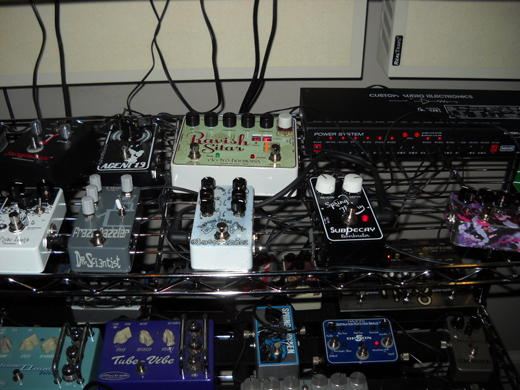
A closer look at some of the selctions, such as the Ravish Sitar from ElectroHarmonix. (Photo: David Weiss)
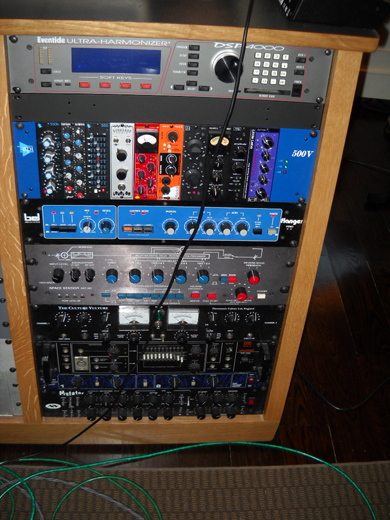
The right-most rack holds an Eventide Ultra-Harmonizer, multiple 500-series modules, a classic Bel stereo flanger, and many more goodies. (Photo: David Weiss)
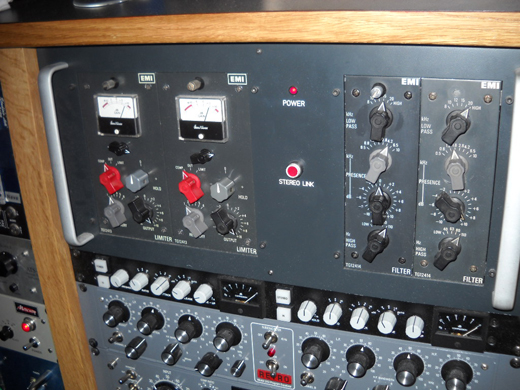
A closer look at the EMI limiter, one channel of which came direct from Abbey Road. (Photo: David Weiss)
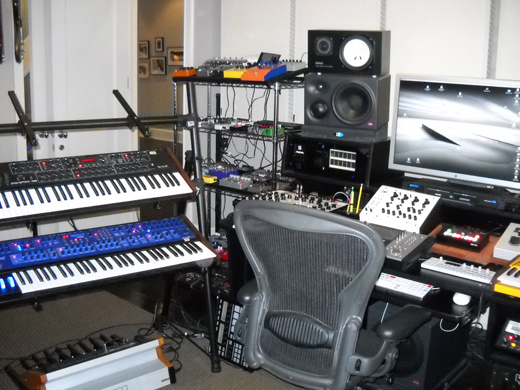
The command center — iZ RADAR converters feed Logic. On the upper left is the pedal rack, next to the studio entrance. (Photo: David Weiss)
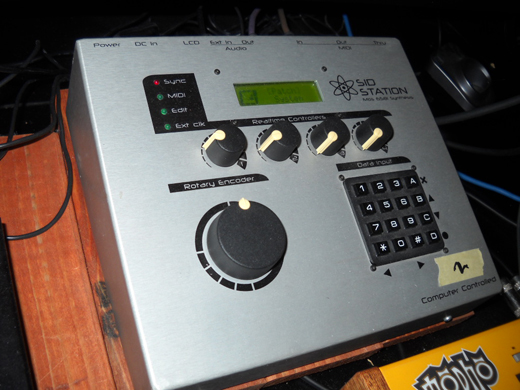
The Elektron Sid Station — a subtractive built around the synth chip of a Commodore 64. (Photo: David Weiss)
Please note: When you buy products through links on this page, we may earn an affiliate commission.







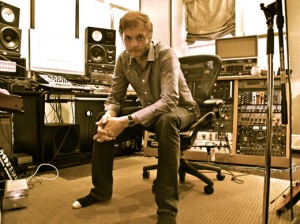
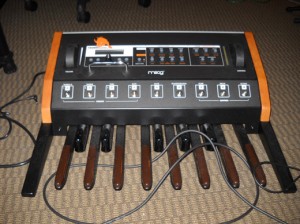
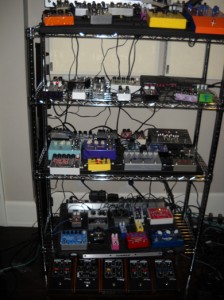
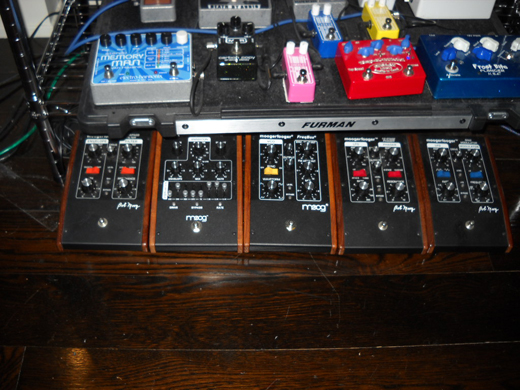
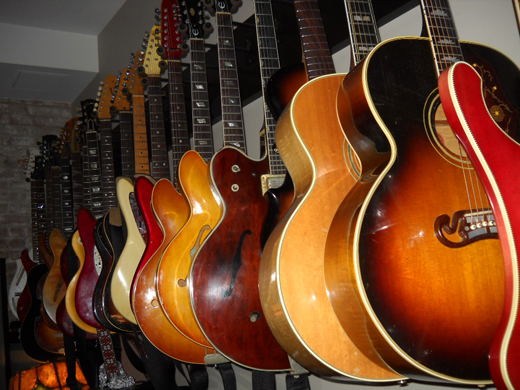
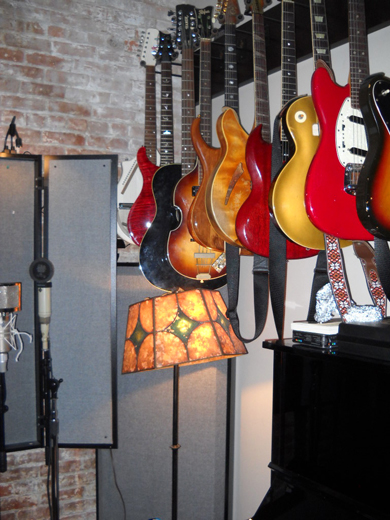
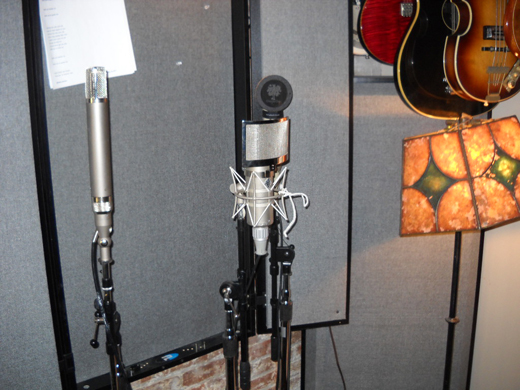
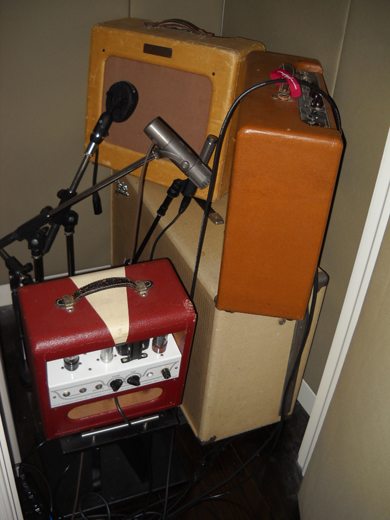
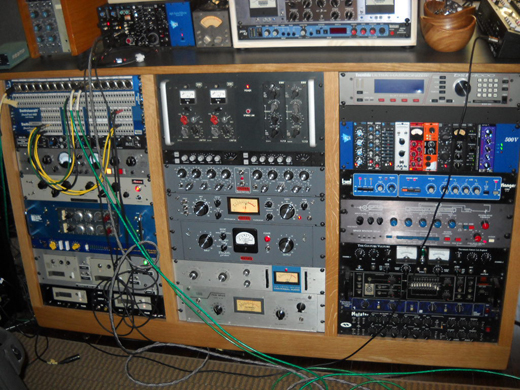
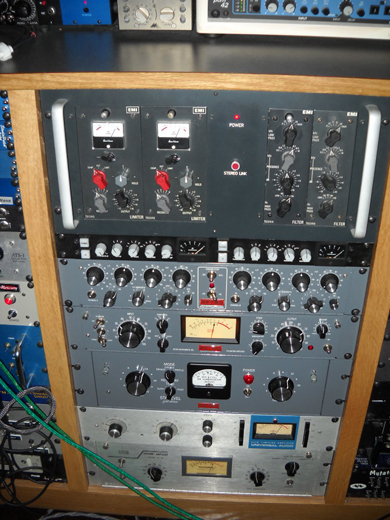
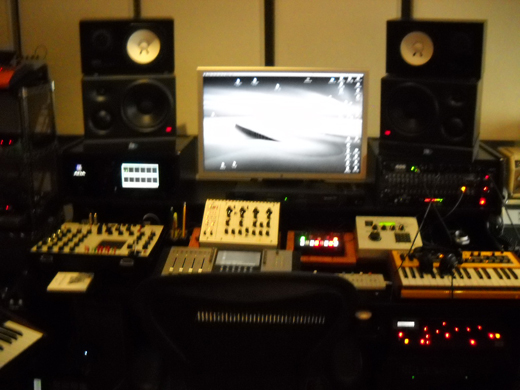
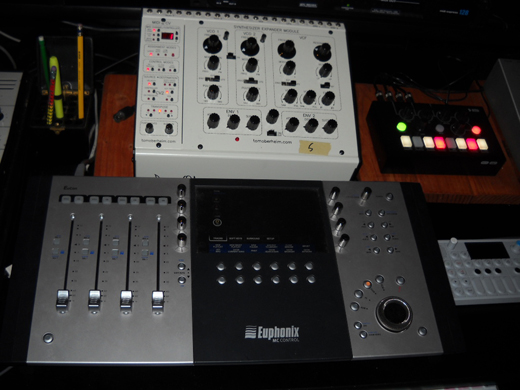
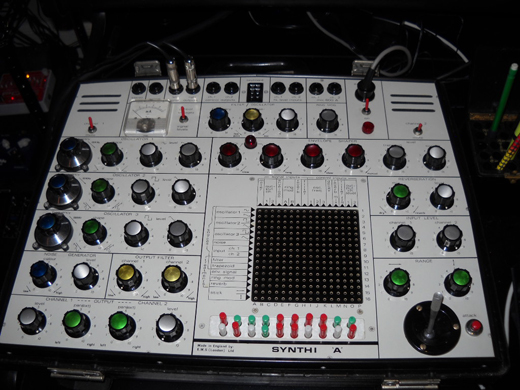
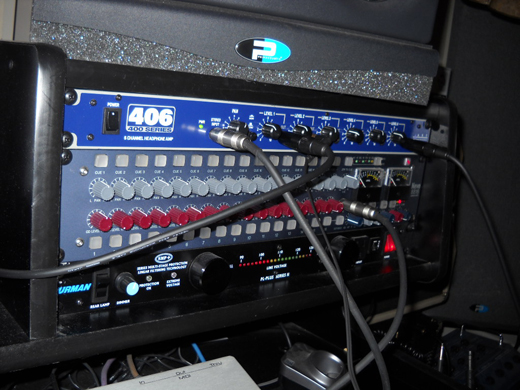
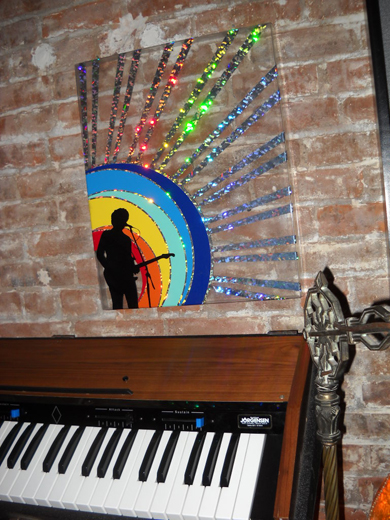
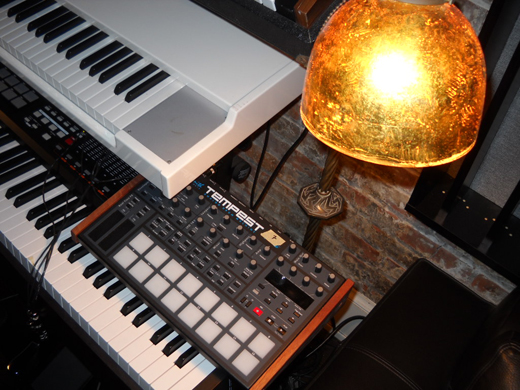
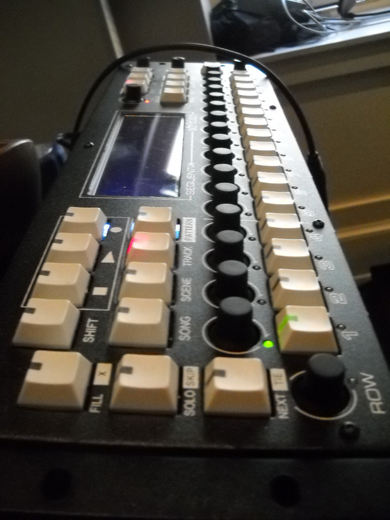
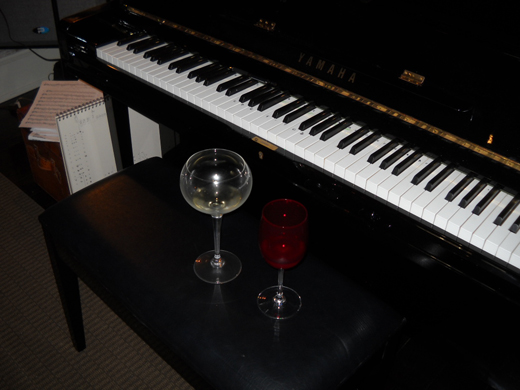
Traceywaaktaar
April 2, 2012 at 1:51 pm (13 years ago)glad too hear from you paul 🙂
Jalan
April 2, 2012 at 2:07 pm (13 years ago)soundcloud.com/yisraelee
Tatiana Lazzarini
April 2, 2012 at 2:10 pm (13 years ago)Спасибо!
Miranda-ha
April 2, 2012 at 2:45 pm (13 years ago)Nice to see you Paul 🙂 Best wishes to you & your family. Can’t wait to hear new music from you x
Summer_moved_on
April 2, 2012 at 2:46 pm (13 years ago)Thanks! Paul!We wait for you in Moscow!!!
Maurishine
April 2, 2012 at 3:01 pm (13 years ago)SALUDOS DESDE MEXICO….
Duran_007
April 2, 2012 at 3:02 pm (13 years ago)one hell of a gear
Kaoru_K
April 2, 2012 at 3:39 pm (13 years ago)Pål,I’m so happy to see you look fine and ready for the next, huh? It seems Jimmy Gnecco is busy with his band but you still have Savoy…
Paulskillen
April 2, 2012 at 4:31 pm (13 years ago)Is that an old Logan string synth I see in the fourth picture from the end?
We used one on our 80s singles ‘The Diary ‘ and ‘The Mask’. Great sound but was really noisy. We kept it in as it was as close to real strings as we could get in the early 80s
regards
Paul from This Final Frame
Delphinep33
April 2, 2012 at 4:51 pm (13 years ago)a really intersting article and great studio pictures
Cskontor
April 2, 2012 at 6:30 pm (13 years ago)hugs from Brazil
Claudia Van Tilburg
April 2, 2012 at 10:58 pm (13 years ago)Great to read something about Paul again. Good thing he is still keeping bussy musically and hopefully we’ll get to hear some of it soon 🙂
Suki Paris
April 2, 2012 at 11:09 pm (13 years ago)It’s so good to hear from You, Dear Pål.
I look forward to seeing you on tour !!!
We miss You so, so much.
Christine
April 4, 2012 at 3:49 am (13 years ago)Pal (Savoy) – Thank you much for taking the time to explain the concept in your music – I loved this! I’ve always wondered where and why you wrote the songs you did and now, I know! =) Although, I’m not skilled on the guitar, I really appreciate your music and I loved how you played with A-ha and now Savoy. Please keep writing and doing what you’re doing because I loved your songwriting from the time I heard ‘Take on Me’ on the radio. PS – Thanks for living here in the US. =) At least one of my favorite band members is closer for me to buy some music =) Please tour Kansas City soon! Thank you in advance =}
valerie salmon
April 4, 2012 at 2:59 pm (13 years ago)best of luck with ur new projects.xxxxxxxxxxxxxxx.:+)
amhb
April 16, 2012 at 1:35 pm (13 years ago)Wow, it’s like a dream come true to see Pal’s studio! Really looking forward to Savoy’s next album!!!
Abel
April 16, 2012 at 6:55 pm (13 years ago)Obrigado Paul por tudo oque voce foi junto ao A-HA. Valeu a pena ser fã de voces!!!!!
Al Andrew
April 17, 2012 at 8:16 am (13 years ago)Great looking office ! No ProTools ?! Suprised
Stuart Styron
April 20, 2012 at 4:16 pm (13 years ago)Best guitar player and songwriter.
Priscila Faillace
September 27, 2012 at 2:37 pm (13 years ago)Pal, me and the brazilian fans love you and your talent. Please, come soon to play to us! Best regards from Rio de Janeiro, from Priscila Faillace
John Keenan
October 25, 2017 at 3:18 pm (7 years ago)one thing I have always pondered upon as a boy being a fan all through the 1980’s how was the title of the a-ha as the band name came up with as the idea ?